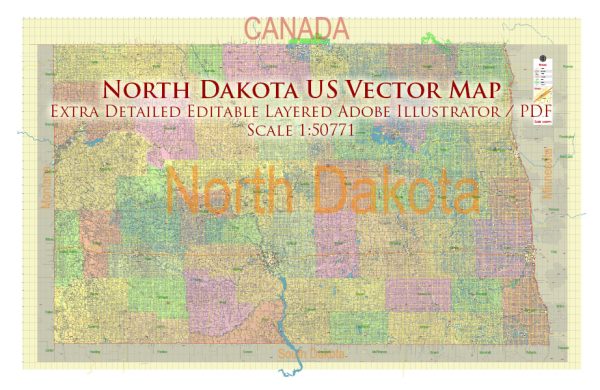North Dakota, like many states, relies on a complex network of water resources and bridges to support its infrastructure and economy. Here are some key points regarding water resources and bridges in North Dakota:
Water Resources:
- Missouri River: The Missouri River is a major waterway that flows through North Dakota. It provides water for irrigation, recreation, and transportation. Several dams and reservoirs along the river, such as Lake Sakakawea and Lake Oahe, help manage water resources and provide flood control.
- Red River: The Red River forms the eastern border of North Dakota. This river is prone to flooding, and the state has invested in various flood control measures, including the Fargo-Moorhead Diversion Project, to protect communities along its banks.
- Groundwater: North Dakota relies on groundwater for drinking water and agricultural irrigation. The state has a network of wells and monitoring systems to manage and conserve this resource.
- Lakes and Reservoirs: North Dakota has numerous lakes and reservoirs, including Devils Lake and Lake Ashtabula, which are important for recreation and water storage.
Bridges:
- Infrastructure: North Dakota has a vast network of bridges that are vital for transportation. These include bridges on major highways, county roads, and railroads. The North Dakota Department of Transportation (NDDOT) is responsible for maintaining and inspecting these bridges.
- Inspection and Maintenance: The NDDOT conducts regular inspections to ensure the safety and structural integrity of bridges. Bridges are rated based on their condition, and maintenance or replacement is prioritized based on these ratings.
- Load Limits: Bridge load limits are enforced to prevent damage and ensure the safety of both the bridge and the vehicles crossing it. Weight limits vary depending on the bridge’s condition and design.
- Emergency Response: North Dakota is vulnerable to flooding, and bridge safety is a critical concern during flood events. The state has emergency response plans and can deploy resources to address bridge issues during natural disasters.
- Investment and Upgrades: North Dakota, like many states, invests in improving and upgrading its bridge infrastructure. This may involve repair, replacement, or expansion to accommodate growing traffic and heavier loads.
- Federal Funding: The state often receives federal funding through programs like the Federal-Aid Highway Program to support bridge projects and ensure their safety and functionality.
It’s important to note that the specific status of North Dakota’s water resources and bridges may change over time due to maintenance, repair, and infrastructure projects. For the most up-to-date information on water resources and bridges in North Dakota, it is recommended to refer to state and local government agencies responsible for these matters.


 Author: Kirill Shrayber, Ph.D.
Author: Kirill Shrayber, Ph.D.